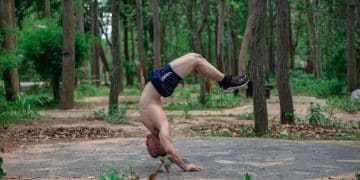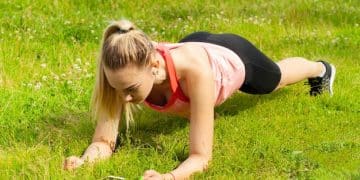Avoid These 5 Common Squat Mistakes That Are Killing Your Gains
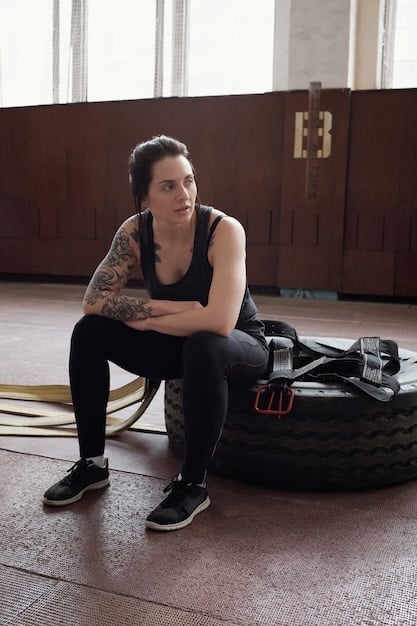
Avoid these five common squat mistakes to maximize your gains, prevent injuries, and ensure proper form for a more effective workout, which includes everything from neglecting warm-ups to improper foot placement.
Squats are a cornerstone exercise for building strength and muscle, but many people unknowingly sabotage their progress. Learning to avoid these 5 common squat mistakes that are killing your gains will allow you to lift heavier and build more muscle.
Why Squat Form Matters
Proper squat form isn’t just about looking good in the gym mirror; it’s the key to unlocking the full potential of this powerful exercise. Correct technique ensures you’re targeting the intended muscle groups and avoiding unnecessary strain on your joints.
When you prioritize form, you not only maximize your muscle gains but also minimize the risk of injuries. Think of it as building a solid foundation: a flawed base will eventually lead to cracks in your structure. So, let’s dive into why mastering your squat form is essential for long-term fitness success.
Muscle Activation and Efficiency
Good squat form optimizes muscle activation in your quads, glutes, and hamstrings. By maintaining proper alignment and engaging the right muscles, you’ll get more out of each rep. This leads to increased strength and muscle growth.
Joint Health and Injury Prevention
Incorrect form can put excessive stress on your knees, lower back, and hips. Over time, this can lead to chronic pain, injuries, and setbacks in your training. Correcting these mistakes protects your joints and allows you to train consistently.
- Enhanced Muscle Growth: Targets the right muscles for optimal development.
- Injury Prevention: Reduces stress on joints, minimizing the risk of injury.
- Improved Performance: Allows heavier lifting and greater gains over time.
In summary, focusing on squat form is an investment in your long-term fitness. It ensures you’re working efficiently, protecting your body, and maximizing your results. Ignoring form is a recipe for frustration and potential injury.
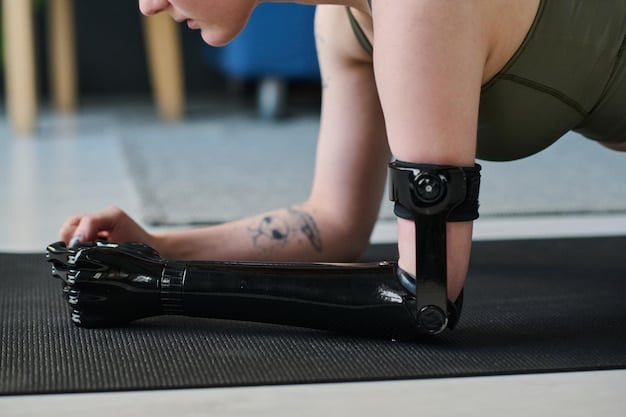
Mistake #1: Neglecting The Warm-Up
Jumping straight into heavy squats without a proper warm-up is like starting a race with cold muscles. You’re setting yourself up for potential strains, tears, and suboptimal performance. A thorough warm-up prepares your body for the demands of squatting.
Think of your muscles and joints as needing lubrication before heavy lifting. A good warm-up increases blood flow, improves flexibility, and activates the muscles you’ll be using. This reduces the risk of injury and allows you to squat with better form and power.
Dynamic Stretching
Include dynamic stretches like leg swings, torso twists, and arm circles. These movements improve mobility and prepare your muscles for the squat pattern. Focus on controlled movements through a full range of motion.
Light Cardio
A few minutes on the treadmill or elliptical increases blood flow and raises your core temperature. This preps your cardiovascular system and makes your muscles more pliable.
- Increased Blood Flow: Warms up muscles and enhances flexibility.
- Improved Mobility: Prepares joints for a full range of motion.
- Muscle Activation: Engages the muscles used in squatting, improving performance.
In conclusion, never skip your warm-up. It’s a crucial step that prepares your body and mind for squatting. A well-executed warm-up minimizes the risk of injury and sets the stage for a more productive workout.
Mistake #2: Rounded Lower Back
A rounded lower back during squats, also known as “butt wink,” can place excessive stress on your spinal discs and ligaments. This posture increases the risk of lower back pain and injury. Maintaining a neutral spine throughout the squat is crucial for safety.
The butt wink often occurs when flexibility is limited, or the core is not engaged enough. As you descend into the squat, the pelvis tucks under, causing the lower back to round. This shifts the load from your legs to your spine, which is not designed to handle such stress.
Core Engagement Techniques
Focus on bracing your core before each rep. Imagine you’re about to be punched in the stomach and tighten your abdominal muscles. This creates a stable base for your spine.
Flexibility and Mobility Work
Improve your hip and ankle mobility with targeted stretches and exercises. Tightness in these areas can contribute to the butt wink. Foam rolling and dynamic stretching can help increase your range of motion.
- Reduced Lower Back Pain: Prevents spinal stress and discomfort.
- Improved Stability: Enhances core engagement for a more stable squat.
- Enhanced Performance: Allows for a stronger and more efficient squat.
In summary, avoid rounding your lower back during squats to protect your spine and maximize your squatting potential. Address any flexibility limitations and focus on engaging your core to maintain a neutral spine throughout the movement.
Mistake #3: Knees Caving Inward
Knees caving inward, also known as knee valgus, is a common squat mistake that can lead to knee pain and injuries. This misalignment places excessive stress on the medial ligaments of the knee, increasing the risk of tears and instability.
Knee valgus often results from weak hip abductors and external rotators, such as the gluteus medius. When these muscles are weak, they fail to stabilize the knees, causing them to collapse inward during the squat. Fixing this issue requires strengthening these key hip muscles.
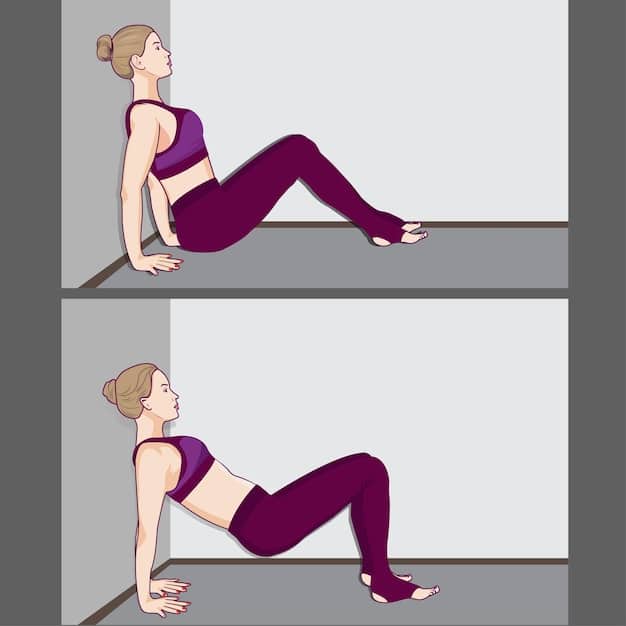
Strengthening Hip Abductors
Incorporate exercises like banded lateral walks, clamshells, and single-leg squats into your routine. These movements target the hip abductors and external rotators, improving knee stability.
Proper Foot Placement
Ensure your feet are hip-width apart and slightly turned out. This foot position allows for better activation of the glutes and helps maintain proper knee alignment.
- Reduced Knee Pain: Prevents excessive stress on the knee joint.
- Improved Stability: Strengthens hip muscles to control knee alignment.
- Enhanced Performance: Allows for a more powerful and stable squat.
In essence, prevent your knees from caving inward during squats to safeguard your knee joints and improve your performance. Focus on strengthening your hip abductors and maintaining proper foot placement to keep your knees tracking over your toes.
Mistake #4: Insufficient Depth
Not squatting deep enough is like only doing half the work. To reap the full benefits of the squat, you need to reach a depth where your hip crease is below your knees. This ensures full muscle activation and range of motion.
Many people limit their squat depth due to flexibility issues, weakness, or discomfort. However, consistently performing shallow squats can hinder muscle development and limit your strength gains. Gradually increasing your depth over time is key to maximizing the benefits of this exercise.
Flexibility Work
Improve your hip and ankle mobility with stretches like pigeon pose, couch stretch, and calf stretches. These stretches increase your range of motion and allow you to squat deeper.
Progressive Overload
Start with a comfortable depth and gradually increase it as your strength and flexibility improve. Use a box or bench as a target to ensure consistent depth.
- Enhanced Muscle Growth: Maximizes muscle activation by utilizing a full range of motion.
- Improved Flexibility: Increases joint mobility and overall flexibility.
- Greater Strength Gains: Allows for a more powerful and effective squat.
In summary, strive for sufficient depth in your squats to maximize muscle activation and strength gains. Address any mobility limitations and gradually increase your depth as your body adapts.
Mistake #5: Overloading Too Quickly
Adding too much weight too soon is a recipe for disaster. It compromises your form, increases the risk of injury, and can stall your progress. Focus on mastering your technique before increasing the load.
Many lifters get caught up in the desire to lift heavy, neglecting the importance of proper form. Lifting heavy with poor technique not only increases the risk of injury but also limits the muscles you’re able to recruit. Incremental increases in weight provide more efficient and sustainable growth.
Mastering Technique
Prioritize proper form over lifting heavy weight. Focus on maintaining a neutral spine, controlling your knee alignment, and squatting to the correct depth. A proper squat will always bring more gains than a heavy bad squat.
Incremental Increases
Gradually increase the weight as your form improves. Small, consistent increases are more effective than large, sporadic jumps. Small steady increases are more sustainable for growth.
- Reduced Risk of Injury: Prevents strains and sprains by maintaining proper form.
- Consistent Progress: Allows for sustainable strength and muscle gains.
- Improved Technique: Reinforces correct form, leading to a more efficient squat.
In essence, avoid overloading too quickly to protect your body and optimize your progress. Prioritize mastering your technique and gradually increase the weight as your form improves.
| Key Point | Brief Description |
|---|---|
| 🏋️♂️ Warm-Up | Prepare muscles with dynamic stretches and light cardio. |
| 💪 Rounded Back | Engage core, maintain a neutral spine to avoid “butt wink”. |
| 🦵 Knee Alignment | Prevent knees from caving in by strengthening hip abductors. |
| 🍑 Squat Depth | Squat deep enough so that your hip crease is below your knees to maximize muscle activation. |
Frequently Asked Questions
▼
Warming up increases blood flow, improves flexibility, and activates the muscles you’ll be using. This reduces the risk of injury and prepares your body for the demands of squatting.
▼
Focus on bracing your core before each rep and maintain a neutral spine. Improve your hip and ankle mobility with targeted stretches and exercises and improve posture.
▼
Knee valgus often results from weak hip abductors and external rotators, such as the gluteus medius. Strengthening these muscles can help improve knee stability.
▼
To reap the full benefits of the squat, aim to reach a depth where your hip crease is below your knees. This ensures full muscle activation and range of motion, maximizing gains.
▼
Adding too much weight too soon compromises your form, increases the risk of injury, and can stall your progress. Focus on mastering your technique before increasing the load.
Conclusion
Avoiding these common squat mistakes is crucial for maximizing your gains, preventing injuries, and building a solid foundation for long-term fitness success. Prioritizing proper form, warming up effectively, and gradually increasing the weight will lead to more effective and sustainable results.
